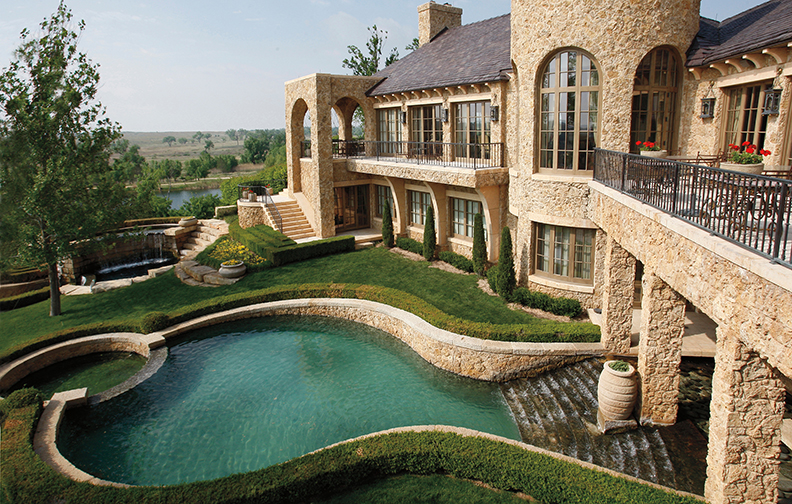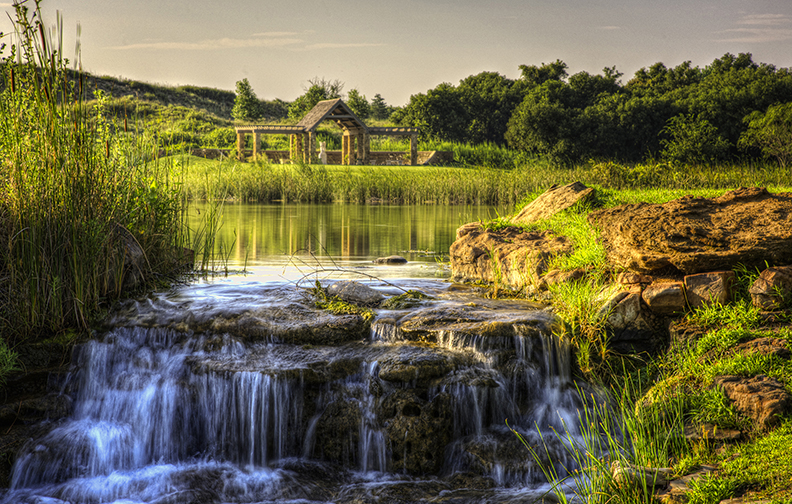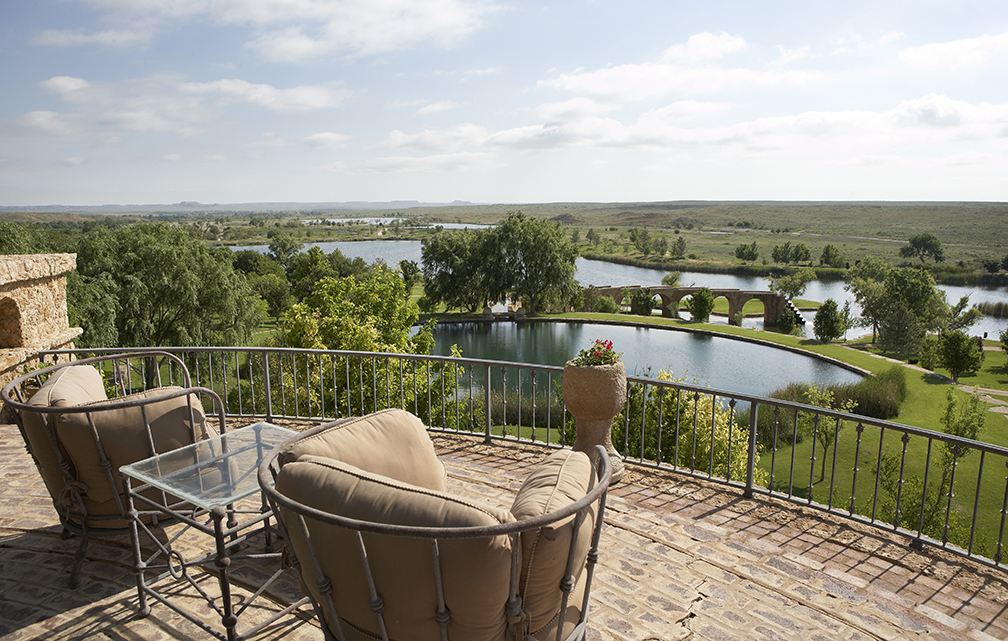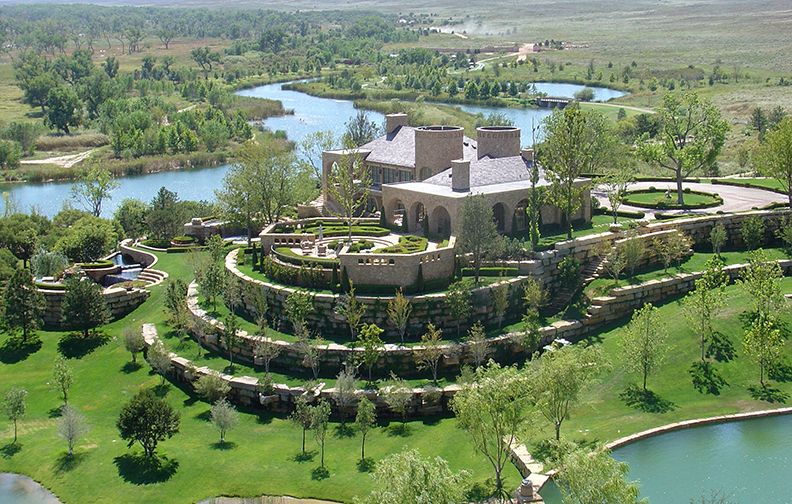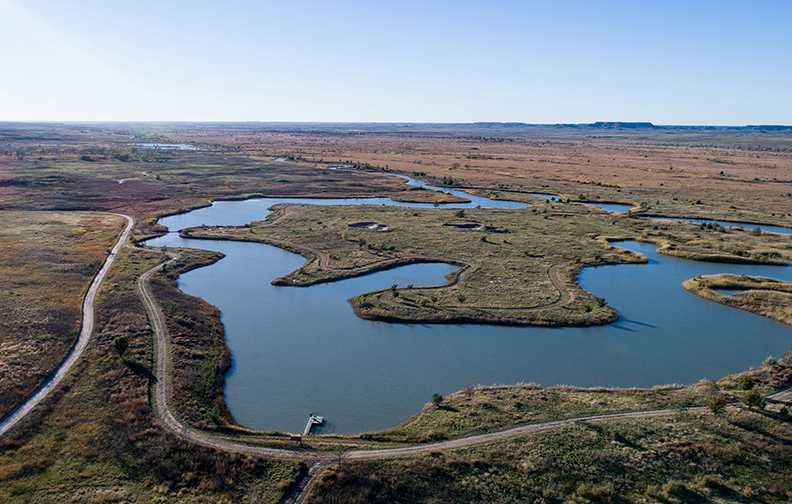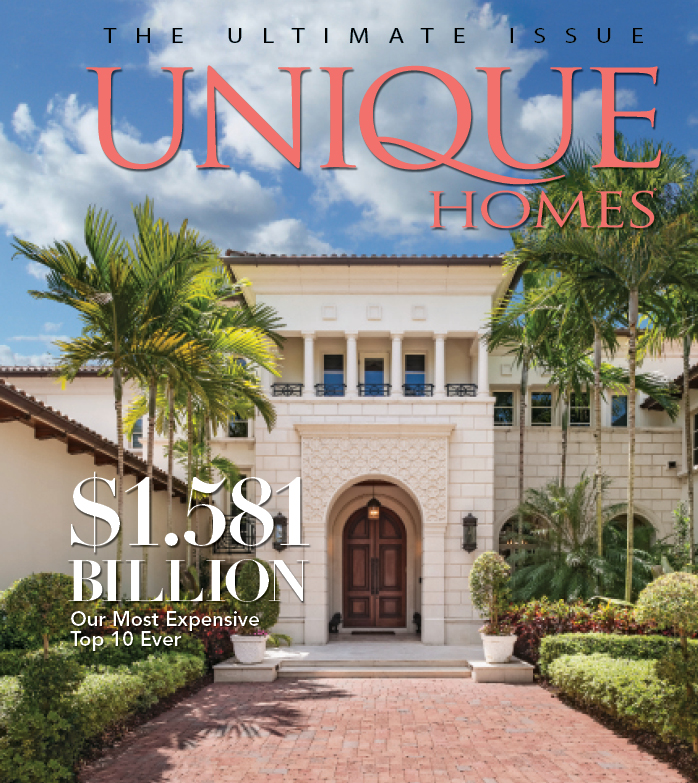Walnut Place, one of Dallas’ finest and largest estates, is going to auction with no reserve bidding opening on Dec. 19.
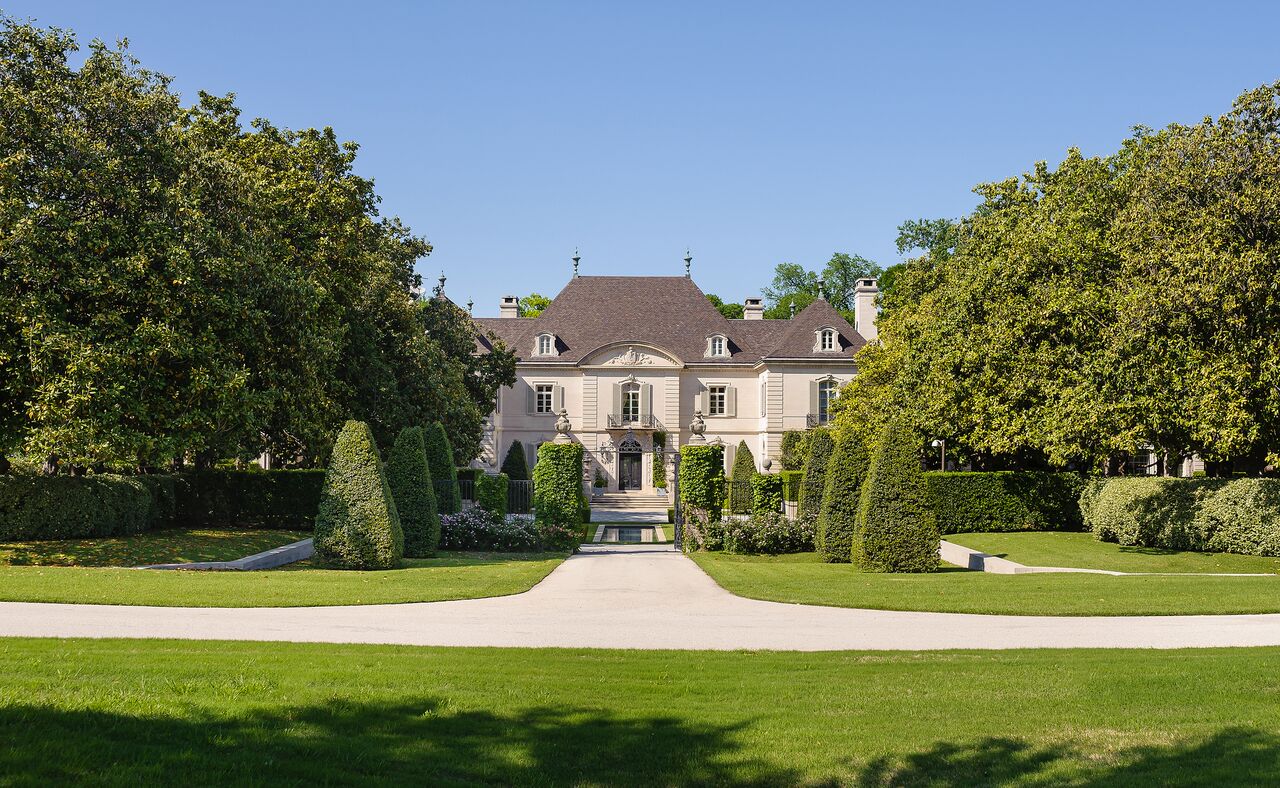
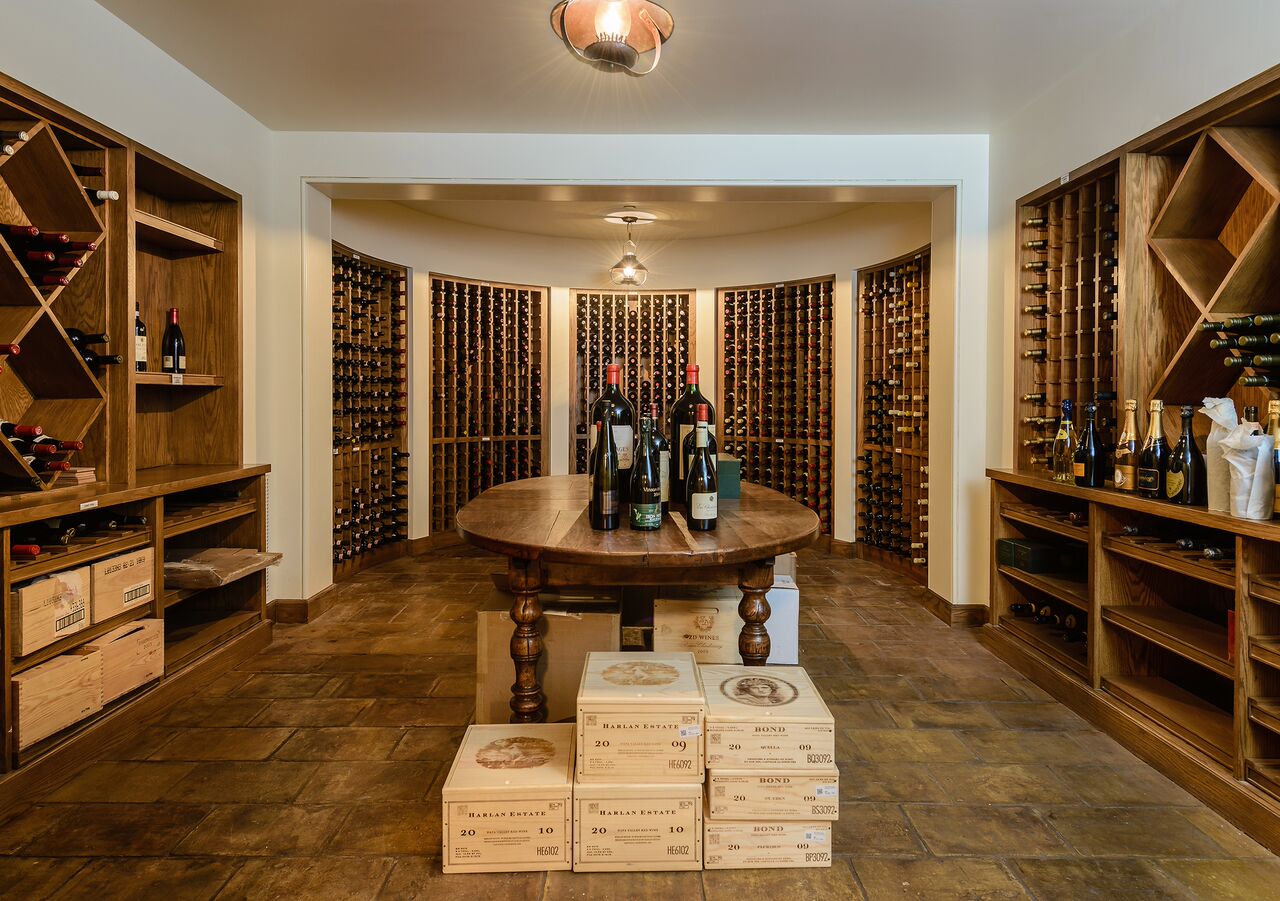
More sellers of luxury properties are taking the auction route to market and sell their properties. There are a number of reasons that it makes sense, especially when buyers shopping at the top level of the market are so few. Auctions get wider attention and the larger auction houses understand the value of advertising globally to reach the major wealth centers rather than restricting themselves just to the U.S. Another reason is the uniqueness of most high-end real estate of which there are few comparables for establishing a fair market price which the bidding process helps to establish that level.
Some of the most notable home auctions have been the elegant Gianni Versace Mansion on South Beach in Miami Beach, Florida in 2013 which sold at $41.5 million to the Jordache Jeans family and the Virginia Klug Winery, which Donald Trump purchased for $6.2 million at a foreclosure auction in 2011. Trump was also the second highest bidder on the Versace Mansion. Another luxury auction is on the horizon when Dallas’ Walnut Place begins the bidding process on December 19.
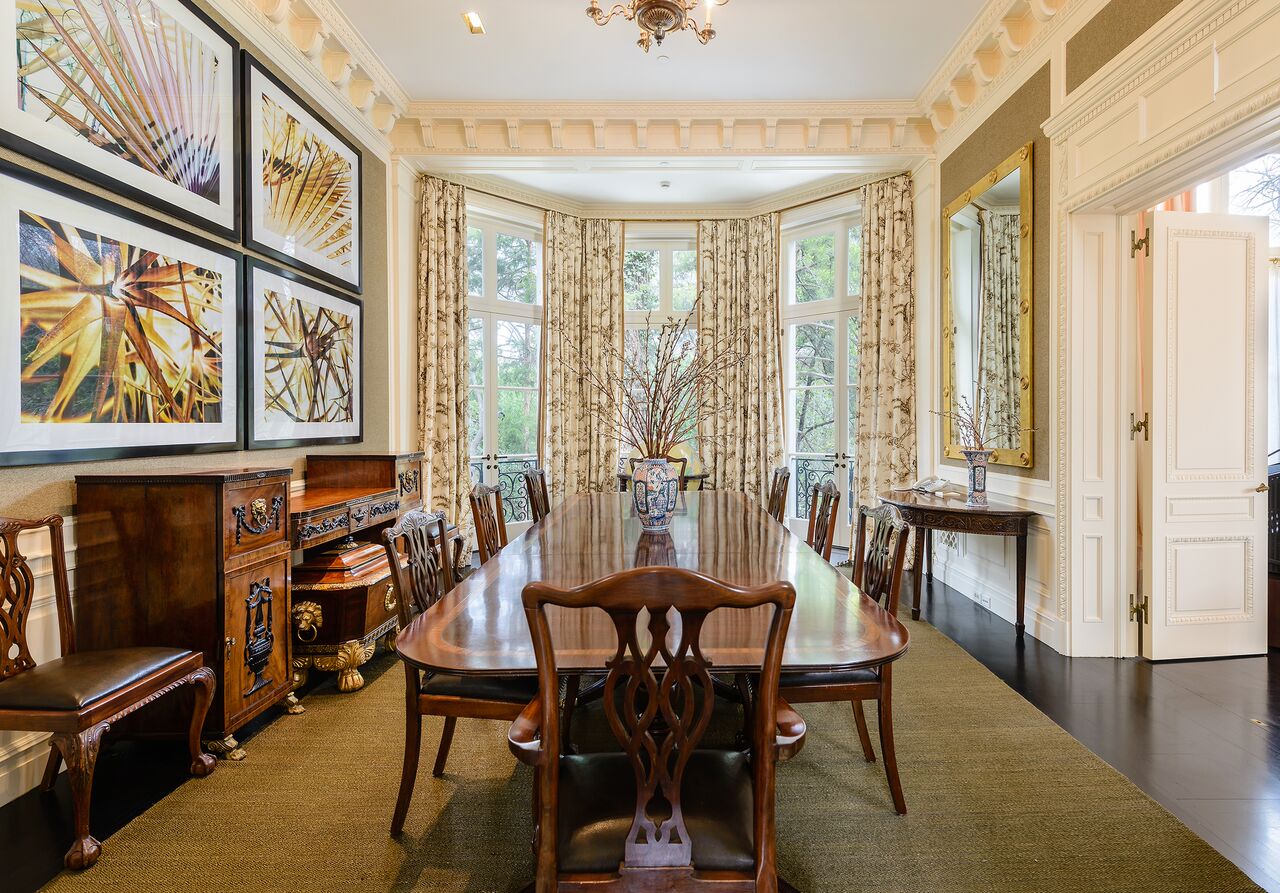
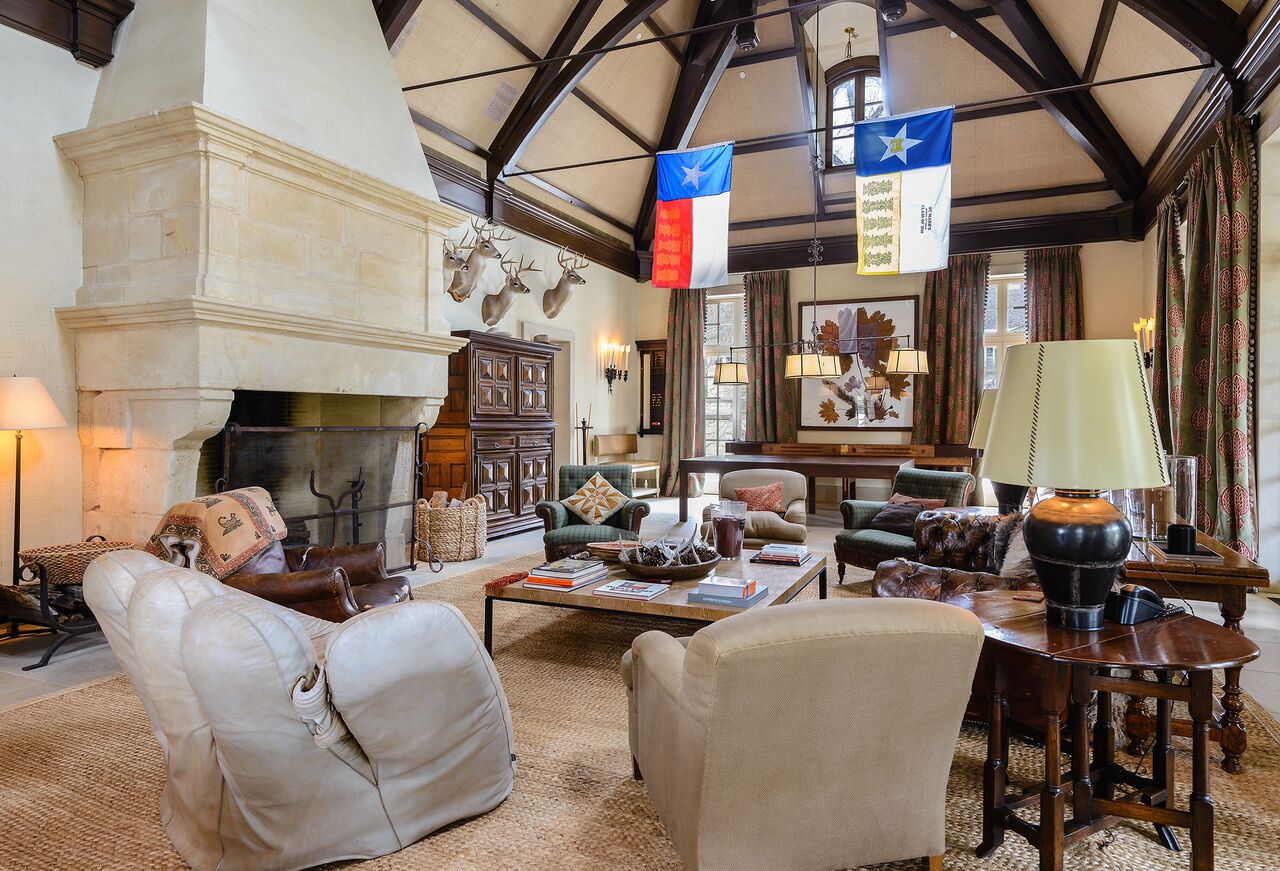
In the Mayflower Estates section of Preston Hollow, Walnut Place is one of the most architecturally significant estates in the southern U.S., designed in 1938 by world-renowned architect Maurice Fatio. The Swiss-born Fatio was well known for his projects in New York and Florida where he designed over 200 homes, many built in Palm Beach for the super rich including Harold Vanderbilt, Marjorie Merriweather Post and E.F. Hutton…
To read the full story, visit TopTenRealEstateDeals.com.
Photos courtesy Concierge Auctions
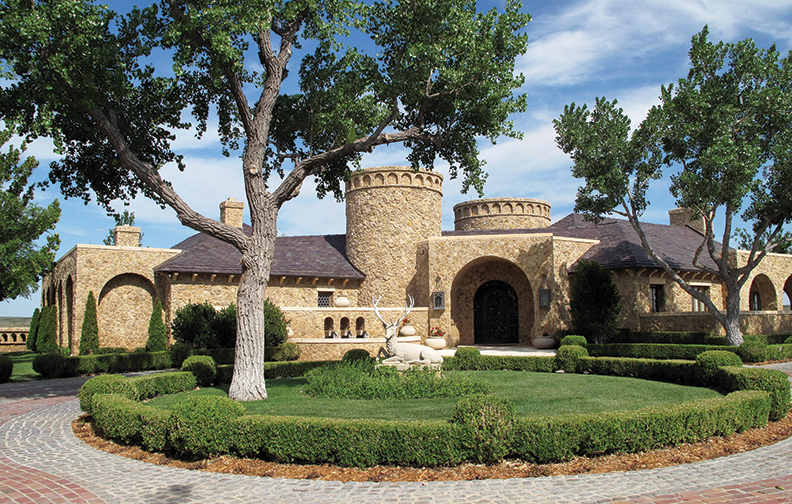
T. Boone Pickens just listed his beloved Mesa Vista Ranch for $250 million.
The property, comprised of over 100 square miles of prime Eastern Texas Panhandle ranch land, has been owned by Pickens for 46 years. In an official statement about selling the property, Pickens states, “I initiated a multi-decade program to help the land heal and, over time, invested millions on wildlife management, programs, and facilities to create what many believe is the best quail hunting in the world.”
Approximately 85 miles northeast of Amarillo, the Mesa Vista Ranch covers approximately 25 miles along the south side of the Canadian river, with a wide variety of land types including rolling hills to elevated ridges to prairie lands. Multiple structures can be found on the grounds, including a Lodge compound and a Lake House. The property also includes an airport and hangar located within an 8-foot-high game fence, and a dog kennel of over 11,000 square feet.
As stated on Hall and Hall’s site, “Boone has been a leader in conservation practices that are now followed by many other sportsmen in the country. As a testament to Boone’s conservation efforts, in 2008 he was named the recipient of the prestigious Park Cities Quail Unlimited Lifetime Sportsman Award.” Wildlife enhancements include over 1,000 quail feeders, deer feeders, many food plot areas and a network of buried waterlines with outlets to create wet areas for quail.
The property is offered jointly and exclusively by Hall and Hall and Chas. S. Middleton and Son.
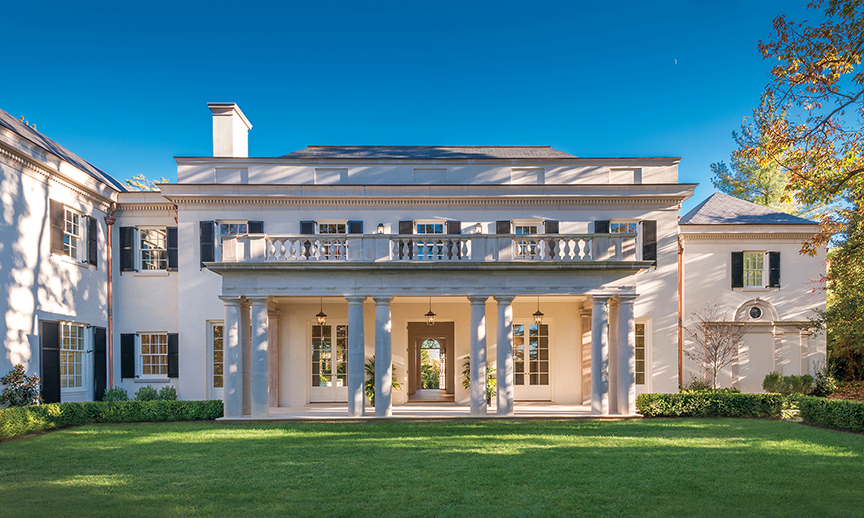
Photo courtesy Maxwell Mackenzie.
In 2017, Unique Homes is traveling the U.S. to find the dominant stories in each region of the country — This issue covers the Northeast and Mid-Atlantic.
By Camilla McLaughlin
To say 2017 is a year of change is an understatement, and real estate is no exception. Prices are up … and down. Condition matters, and design and architecture have almost become a national obsession. In our yearlong series, we are taking a look at all the regions of the country in an attempt to answer the question of the year,
WHAT NOW?
For real estate in major East Coast cities, 2017 culminates a decade of change. In many locations, it is a turning point of sorts with new value equations being forged and entirely new standards for luxury properties emerging. Lifestyle matters more than ever. Whether it’s a desire for arts and culture or an escape from ever-increasing gridlock, a penchant for urban living has become a prime driver for real estate in many markets. What changes also stays the same, as neighborhoods that were hot hundreds of years ago are back in vogue.
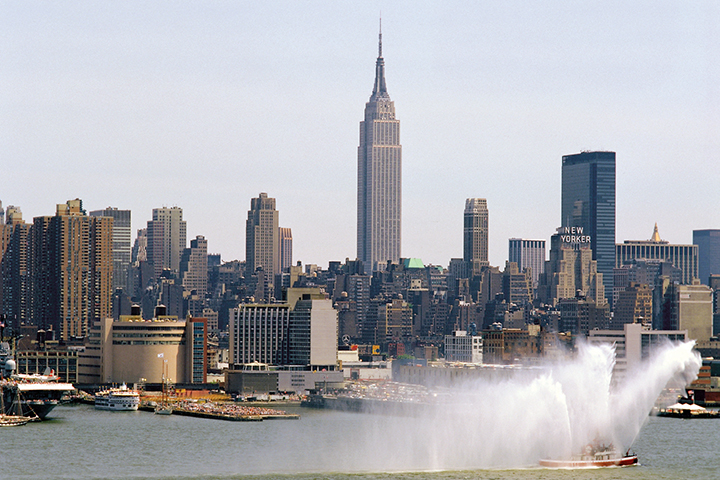
Photo courtesy ©getty images.
New York
“We used to say cash is king. I think right now value is king. Everyone from luxury down to the $1 million range wants to feel some value,” says Diane Ramirez, chairman and CEO of Halstead Property, about real estate in the Big Apple.
Few real estate markets received as much scrutiny in 2016 as New York. Reports from the first quarter of 2017 point toward a revival, with prices and transactions for resale apartments increasing by 5 percent year-over-year. Closing prices for new development averaged $4.3 million, 15-percent higher than the first quarter 2016. “Post election, we’re seeing a great deal of interest. In Manhattan, the luxury market is bubbling, very interesting and active. We’re seeing activity, but the higher you go up the more challenging it is. Yet, we recently closed on a $41-million-plus sale,” says Ramirez.
Years of white-hot demand tempered in 2016, and sellers have had to fine tune expectations and adjust to the new market reality. Ramirez explains: “Buyers, whether it’s $30 million or $16 million or $1.5 million, want to see or feel they got some value.” It doesn’t necessarily have to be price. It could be some type of a concession or initiative.
What’s hot here continues to be new. “People love new construction. They just love the newness. It’s no longer just about space,” Ramirez says, listing the benefits new construction delivers — views even from the kitchen, open plans with excellent flow, collaborative spaces and technology. And big windows that make these urban dwellings almost seem like a suburban home.
Fewer permit applications suggest development is slowing. New buildings currently in the pipeline are not on ultra prime streets. While still very upscale, they will come to market at lower price points. “I am happy to see some of the newest development coming in prices that are still in the $6 million range or higher but not starting at $8 million,” says Ramirez.
Highest-priced listing: $110 million penthouse in the Woolworth Tower Residences
Boston
“Boston is becoming a little shinier. The public gardens and esplanade, all the things we love about it, are still here, but you can definitely see change,” says Paul Grover, a partner at Robert Paul Properties. More than the skyline is being altered as recent construction, such as the 60-story Millennium Towers, introduces a new paradigm for premium properties. Unlike the townhouses prized by Boston’s legendary Brahmin, the lifestyle is ultra luxurious with services, architecture and amenities comparable to prime buildings in New York and San Francisco. For example, the Millennium has a private restaurant and bar, under the helm of Michael Mina, solely for residents.
Change is not new to Boston. For almost two decades, the city has been in a constant state of flux as one neighborhood after another is rediscovered. Some of the most compelling real estate stories today are coming out of old towns that ring city center. Newton, Brookline, Chestnut Hill and Weston remain luxury stalwarts, but close-in communities like Watertown, Chelsea and Everett are seeing record prices. Cambridge is white hot. In Somerville, once a haven for first-time buyers, million-dollar prices are not uncommon.
Right now, Boston has one of the hottest real estate markets in the country with the number of single-family homes for sale down 35.2 percent year-over-year in February; condos were down 27.6 percent. Statewide, February marked the 60th time in the last 61 months with a year-over-year inventory decrease.
What’s hot: Close-in locations with access to transportation.
Highest-priced listing: Woodland Manor, a $90 million estate on 14 acres, less than 6 miles from the center of the city in Chestnut Hill.
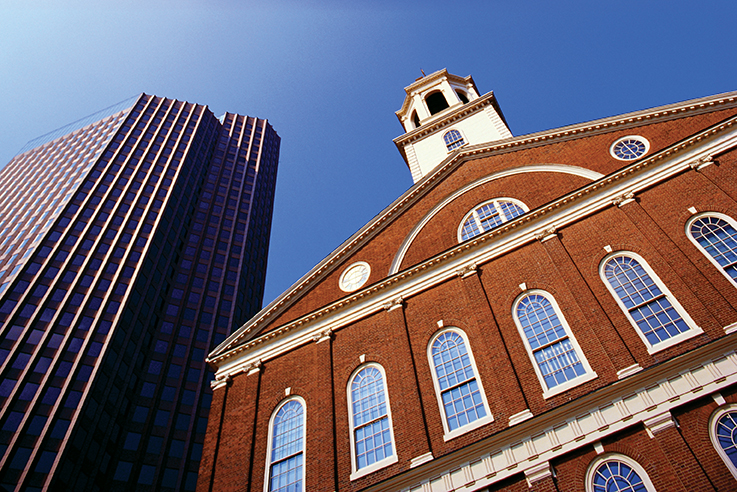
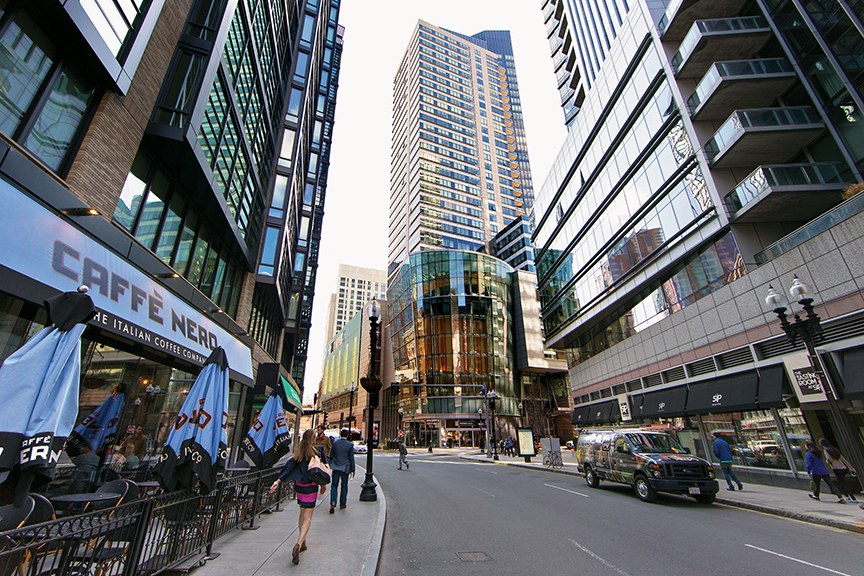
Top: ©getty images; Bottom: 2 Avery Street, courtesy Robert Paul Properties.
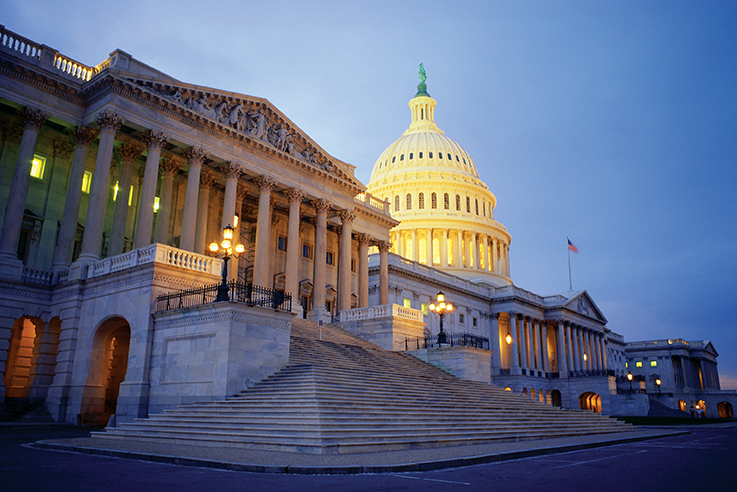
Photo courtesy ©getty images.
Washington, D.C.
“The thing with D.C., it’s always been a solid market with so many people moving in and out,” says Katherine Herndon Martin with McEnearney Associates. Long before the recession, Washington’s real estate star was on the rise, and in recent years it has charted among top markets nationally. In March, homes were selling within two weeks, with the number of units sold up 15 percent vs. a year ago.
The recent focus on ultra properties on Kalorama Road has pushed upscale Washington into the limelight. Until recently, prices above $12 million were rare, but billionaire interest, beginning with Jeff Bezos’ purchase of a $23 million property on S Street, puts new upscale dynamics in play. Similar to Beverly Hills, new estates, rather than new towers, create rising benchmarks for luxury here.
The most expensive property on the market in the District of Columbia is a $22 million estate on Chain Bridge Road on the second-highest point in the
city. (The National Cathedral is the highest.) At first glance, the regency-styled home seems to be one of the city’s historic estates, but it is newly built and constructed with a level of materials and attention to detail comparable to that found in the most expensive areas of the country.
The other facet of the D.C. real estate story is continued redevelopment and gentrification of neighborhoods and parts of the city, a process that began decades ago. Some of the newest hot areas include Brookland near Catholic University as well as neighborhoods around Logan Circle. In many of the suburbs, bigger continues to have great appeal with buyers often adding on to what is already substantial square footage in properties in Potomac, Maryland and McLean, Virginia.
Highest Price in the Region: $24 million for new construction in McLean, Virginia.
Highest Price in the District: $22 million for a newly constructed estate in the Foxhall Neighborhood.
Philadelphia
Eds and meds is how Mark Wade with Berkshire Hathaway HomeServices Fox and Roach Realtors sums up part of the draw to Center City Philadelphia. But, based on the large number of downsizers exchanging suburb for city, arts and culture are easily in the mix. The big news here is new super premium buildings that fetch unheard of prices, especially for condominium residences. “Basically, what we have is that Philadelphia is a town of Toyotas and Mercedes. That’s our high-rise market. What’s coming down the pike are Bentleys. There is a huge disparity between the two. The gap is unbelievable,” Wade says referring to the recent sale of an 8,900-square-foot, two-story penthouse at 500 Walnut for $17.85 million, a record in a city where the previous high priced sale was a $12.5 million penthouse, set in 2010.
Newcomers, particularly those drawn by the universities and medical systems, also opt for a home in the city. “Twenty-five years ago, the trend was the exact opposite. Somebody would move here, say from Atlanta, and they would bypass the city and magically end up in the suburbs. Today, when we get a transferee like that, it’s the exact opposite,” observes Wade. Additionally, the city attracts a large contingent of commuters to Manhattan, who happily trade an hour in the car for a productive hour on the train.
Highest-priced listing: $16.795 million for a
Society Hill condo.
On the radar: New ultra-luxury buildings, such as the Residences at the Ritz Carlton, are setting records over $10 million.
Market Insight: “When our market rises, it does so at a sustainable pace,” says Wade. “When our market falls, it does so gradually — we don’t have the crazy ups and downs of say a Miami, or New York, or D.C. We seem to chug along either up or down. Nothing wrong with that!”
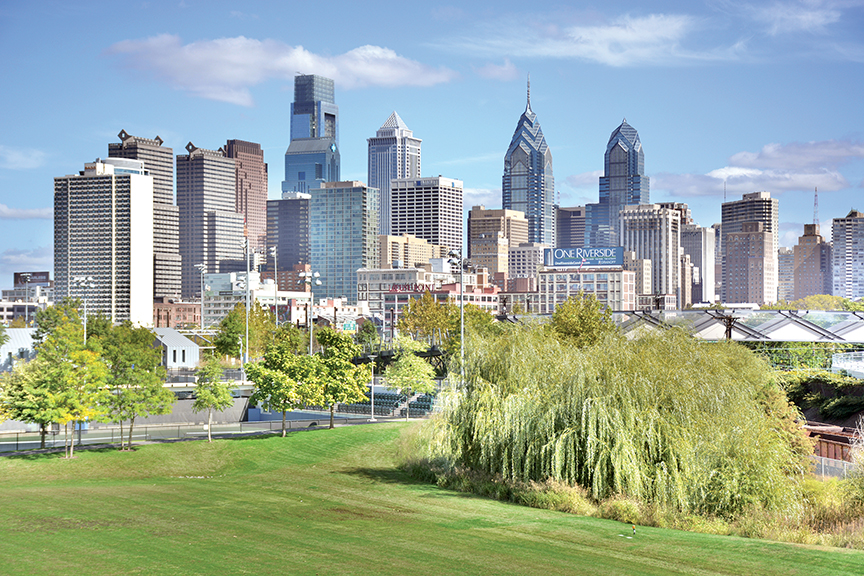
Photo courtesy ©Mefmanoo/Wikimedia Commons.
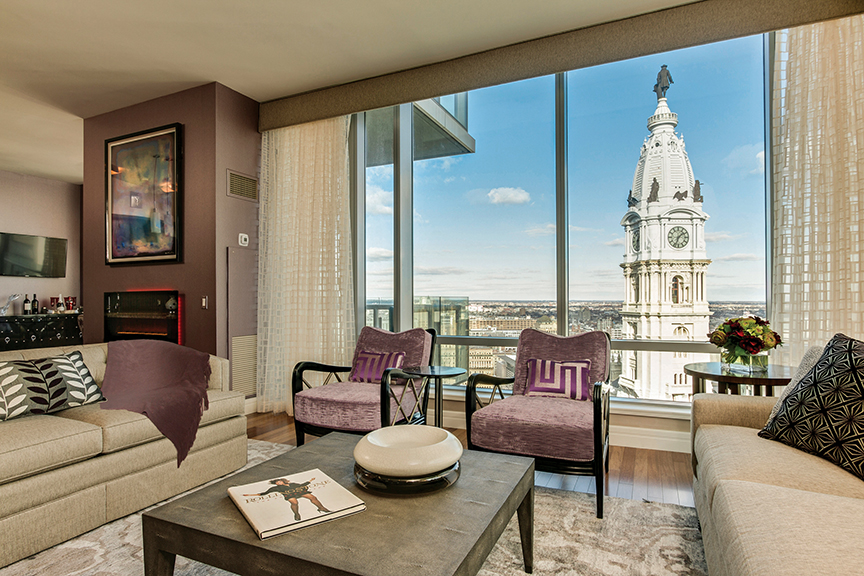
The Residences at The Ritz-Carlton, Philadelphia. Photo courtesy Ritz-Carlton.
Baltimore
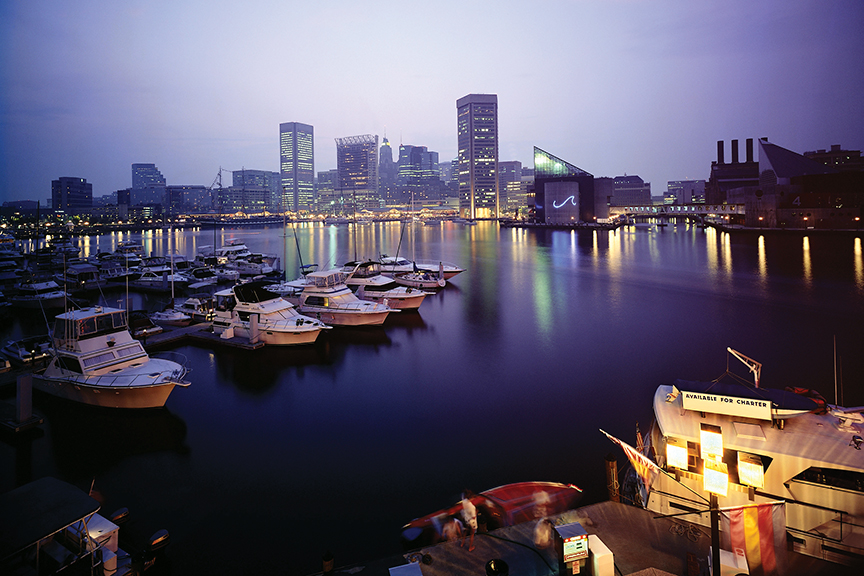
Photo courtesy ©getty images.
Charm City is more than just a catchy moniker. “Baltimore is a hotbed,” and when you are here you discover that it literally is Charm City, observes Charlie Hatter, owner of Prime Building Advantage and Monument Sotheby’s International Realty in Baltimore. “Luxury real estate is doing very, very well,” he says, citing a recent $6 million sale. “Anything above $2 million is considered ultra luxury for this market.” High-end suburbs including Roland Park and Towson and properties in the horse country see strong demand.
The ambiance of the city and prices bring a number of new residents who have children in New York or Washington, D.C., which are both an easy train ride away. Revitalized areas in the city and inner harbor area are in demand. Like many places, sales were slow or even stagnant in summer and fall. On the other hand, Charlie Hatter describes the spring market as “huge” with lots of activity around the inner harbor, as well as areas that have been revitalized. “People love the charm and the uniqueness of the older properties,” he says.
Highest-priced listing: $12.5 million for a Four Seasons penthouse with skyline and water views.
This story originally appeared in Unique Homes Ultimate ’17. Click here to see the digital version.
By: Camilla McLaughlin

Photo courtesy Istockphoto.com
Taking the temperature of luxury real estate at year-end was not an easy task, with post-election uncertainty still palpable and an interest-rate hike in motion. What does it mean for upscale consumers? A new state of mind is what Diane Ramirez, CEO and co-chairman of Halstead Property, sees emerging in the marketplace.
Cautiously optimistic … price conscious … limited inventory … a glut of properties … sell now … hang tight. These are all phrases industry leaders used to characterize the upscale market as 2016 transitioned into 2017, and nothing better illustrated the contradictory dynamics of luxury real estate at year-end.
High-end properties led the recovery, but this year the luxury story is, in part, one of increasing days on market and slower price appreciation in some but not all locations. “Some markets are seeing a slowdown in the high-end and some aren’t. It’s important to keep this in perspective,” says Philip White, president and chief executive officer, Sotheby’s International Realty Affiliates.
“Markets that are seeing a slowdown are places that came back hard and fast from the recession,” says Stephanie Anton, executive vice president, Luxury Portfolio International.
“In most markets, we’re seeing price increases stabilizing, and 2017 will be a great time to buy, says Lesli Akers, president of Keller Williams Luxury Homes International. “Basically, we’ve moved out of a ‘crazy’ sellers’ market into a ‘normal’ sellers’ market. We anticipate the luxury market will be more balanced in 2017.”
No Market Shift Overall
By the end of December, the most recent data confirmed what many anticipated: 2016 would go on record as an exceptional year. “Over the past 11 months, the majority of markets have seen home prices return to their pre-recession levels, reaffirming that 2016 has been the best year for the housing market since the recession,” said Dave Liniger, CEO and co-founder of RE/MAX.
Even though rising mortgage rates and a limited inventory in affordable price brackets are expected to temper sales, the outlook is positive, and at year-end, favorable indicators continued to accumulate. October sales — up 5.9 percent year-over-year — charted the highest pace since February 2007. Expectations are 2016 sales will tally 5.42 million, the best year since 2006, when 6.47 million properties sold. September prices, according to the Case Schiller Home Price Index, surpassed the July 2006 peak. With just over a four-month supply, the inventory is well under the 6-month benchmark that signals a balance between buyers and sellers. Looking ahead, prices are projected to rise 5 percent this year, followed by a 4-percent increase in 2017, when existing sales are expected to track at 5.52 million.
According to the RE/MAX National Housing Report, more homes in all price brackets sold in November than in any November in the last eight years, with home sales 19.1 percent greater than a year ago.
“The housing market has proved more resilient than many feared this time last year,” observes Akers. “At the lower end of the price scale, there’s very limited inventory. Anything under, say $300,000, is flying off the shelf.”
Most importantly, there are no signs pointing to a market shift anytime soon. In fact, almost three quarters of industry experts surveyed by Zillow do not expect the pendulum to swing back in favor of buyers until well beyond 2017. The largest number, 42 percent, see it taking place in 2018 while a few even look past 2020.
Compared to recent years, interest from international buyers softened in 2016. “The worldwide economic slowdown, like everything else, is relative. Granted, we all have to be mindful of global challenges with the potential to slow the foreign investment in high-end property, but these types of challenges have yet to negatively affect the majority of the affluent,” says Gino Blefari, CEO of HSF Affiliates LLC.
Luxury is Local
On the other hand, a range of variables from a surge of new construction to the value of the dollar, to new requirements for transaction disclosures, are affecting sales in certain high-end locales, while a lack of properties puts a damper on transactions in others. The end result is a diverse and stratified luxury market.
“It’s a tale of many markets and, also, markets within markets. Depending on the market, certain price points are more active than others. We also see the disparity in demand for new development and construction,” shares Charlie Young, president & CEO, Coldwell Banker Real Estate LLC.
“Real estate is a local market business, so there are always going to be outliers and exceptions to overall trends. It’s all about supply and demand,” shares Akers.
“The West has been strong continually for the last several years. The East Coast had a little pre- and post-election slump or slowdown, but that seems to be improving now with the stock market’s reacting favorably to the election,” says John Brian Losh, publisher of LuxuryRealEstate.com.
Uber-luxury properties in New York, Miami and platinum neighborhoods on L.A.’s Westside capture the most attention from both traditional and social media. It’s tempting to consider that heady realm as indicative of luxury overall, but those price points and locations represent a slim slice of the market. It’s for good reason economists are prone to use sui generis to characterize this rarified sphere.
“When we look at the ultra-high-end $15 million-plus price range, it’s a very small percentage of overall U.S. home sales — we have to consider things such as affordability, behavioral trends and more,” says White.
Recently, John Burns, CEO of John Burns Real Estate Consulting weighed in to counter reports of a national luxury slowdown. According to Burns, luxury home sales continue to increase and sales of homes priced above $600,000 in the last 12 months exceed the prior 12 months by 10 percent. Data from NAR also shows homes priced above $750,000 accounting for 4.55 percent of overall sales in the first 10 months of 2016, compared to 4.491 percent in 2015.
If anything, the recovery itself has been a story of many markets. “We’ve not had a single year where you can say every sector was growing or performing well. The luxury market did better in the early years, but in the past year appears to be one of the weaker parts of the market,” says Jonathan Smoke, chief economist for Realtor.com, who sees real estate overall as a “big dynamic ecosystem.”
Ask agents and experts where luxury sales are still hot and they tick off a range of places as diverse as Denver, Los Angeles, San Francisco, Portland, Seattle, even parts of Florida. And the risk in these markets is not a lack of buyers, but rather not enough homes to sell. Of the 35 largest U.S. metros, Boston has had the largest decline in inventory year over year, according to Zillow.
Paul Boomsma, president of Luxury Portfolio International and COO of Leading RE, also sees diversification of the high end as a positive indication that the luxury sphere might be settling into what could be considered normal. “When you’re in a normal market, it’s not the same everywhere.”
Uncertainty surrounding the election also put some real estate plans on the backburner, although reports from agents at the end of December suggest this might be a temporary adjustment.
Inventory is Down, Except…
The supply of homes for sale priced above $1 million fell 2.4 percent in the third quarter from a year prior, while those priced above $5 million increased 17.2 percent, according to Redfin.
“Inventory across the board in the broader market has been — and I believe will continue to be — a concern, with the exception of sections overbuilding in new construction. In the upper price brackets, it’s shown to be an issue as well. On the other side of that sword, we have areas where our $7 million-plus and certain $20 million-plus buyers have many to choose from, so that is a sign of few active buyers and not so much an inventory issue,” explains Craig Hogan, vice president for luxury, Coldwell Banker Real Estate LLC.
In New York City, where the number of for-sale properties grew in 2016 and prices stabilized and even softened, those who know the market say the pendulum still favors sellers. “It’s not a buyers’ market, but buyers do have more options now,” says Eric Serras, principal broker at Ideal Properties Group.
In Manhattan, the number of properties for sale priced at $30 million-and-up is unprecedented. “We’ve never had a supply at that level and with that level of superior finishes. There is nothing that isn’t superb. Usually you have a jewel or two of those, but we have a number of jewels now. It obviously creates a bit of an oversupply,” observed Ramirez.
Hope and Change?
According to Redfin, luxury home prices rose 1.4 percent in the third quarter of 2016 compared to last year, to an average of $1.6 million. Redfin’s analysis tracks home sales in more than 1,000 cities across the country and defines a home as luxury if it is among the top 5 percent most expensive homes sold in the city in each quarter.
Stock market volatility early in the year followed by global economic uncertainty related to the Chinese economy and Brexit may have dampened price growth, but it didn’t keep luxury clientele from buying. Sales of homes priced above $1 million increased 6.8 percent in the third quarter from a year prior. Sales of homes priced above $5 million were mostly flat, inching up a mere 0.4 percent.
Instead of a slowdown, Anne Miller, director of Brand Marketing for Re/Max, describes the current status for luxury as more of a pause as a result of a watch- and-wait mode post-election. “Right now, everyone is positive about 2017.” Also, she says, it’s important to remember this is a discretionary purchase.
All of this underscores how much real estate has become a passion for the affluent. “We know on average the top 1 percent own at least four houses in different locations,” Anton says. “They are focused on real estate, but the post-recession affluent consumer is more price sensitive, more sophisticated, more focused on research and more involved in the process. They are becoming greater partners with their agents.”
Many believe a change is in the offing for luxury. “We are seeing increased activity since the election and believe this represents a pent-up demand in the upper price points,” says White.
Even in New York, a “new state of mind” is replacing what Ramirez calls “a lackluster desire to move forward.” Too many options immobilized potential buyers, who hesitated because a better option might be available the next day. This lack of urgency even trickled down to lower price points. Now, Ramirez says, “People are realizing, ‘this is the market, this is the new normal. So, let me look for what is perfect for me and move forward, there is nothing else to wait for.’”
“What we see is today’s most affluent buyers consider themselves to be prudent. Nobody is spending money frivolously, but they’re spending money. What you have to remember is what may be frivolous to one person is an absolute requirement to someone else, so the person who is making that purchase, it’s not a frivolity to them because then they’re making a prudent purchase,” explains Boomsma.
No matter what happens there is a good chance the love affair between the affluent and real estate will continue. “They are always looking for the next best thing. They want to invest their money wisely, and if they can get in sooner and find something they absolutely love, the better it is,” says Miller.

Wild Cards
Year-end finds us at a unique vantage point, where everything from foreign policy to taxes to the economy seems to be on a mythic tipping point. For luxury, several potential wildcards could be at play. Consider: “tax cuts that might benefit high-income or higher-net-worth individuals that could provide the incentive, the means and the interest to invest in real estate,” says Smoke. “Real estate is a long-term inflation hedge, and so if indeed those funds are more available because of tax cuts and/or from financial market performance…. And inflation is more expected in the future, there could be more individuals pursuing specific investment and second homes because of the ability to access an inflation hedge.”
A potential negative, according to Smoke, would be changes to the mortgage interest deduction. “Imposing a cap is going to impact luxury more than other parts of the market, and, in particular, one part of the cap could be no longer allowing an interest deduction on second homes or vacation homes,” he says. While not all the upper-tier relies on mortgages, changes would still affect a swath of this demographic, such as older baby boomers who comprise a substantial segment of this market.
Still, Boomsma says he finds it interesting that in post-election concerns, the economy is not at the forefront. “It’s certainly not in the perception right now that the economy is the great concern, so from this perspective when it comes to luxury real estate, that’s probably a good thing,” he says.



